Polish shells, Austrian hussars and Turkish fives
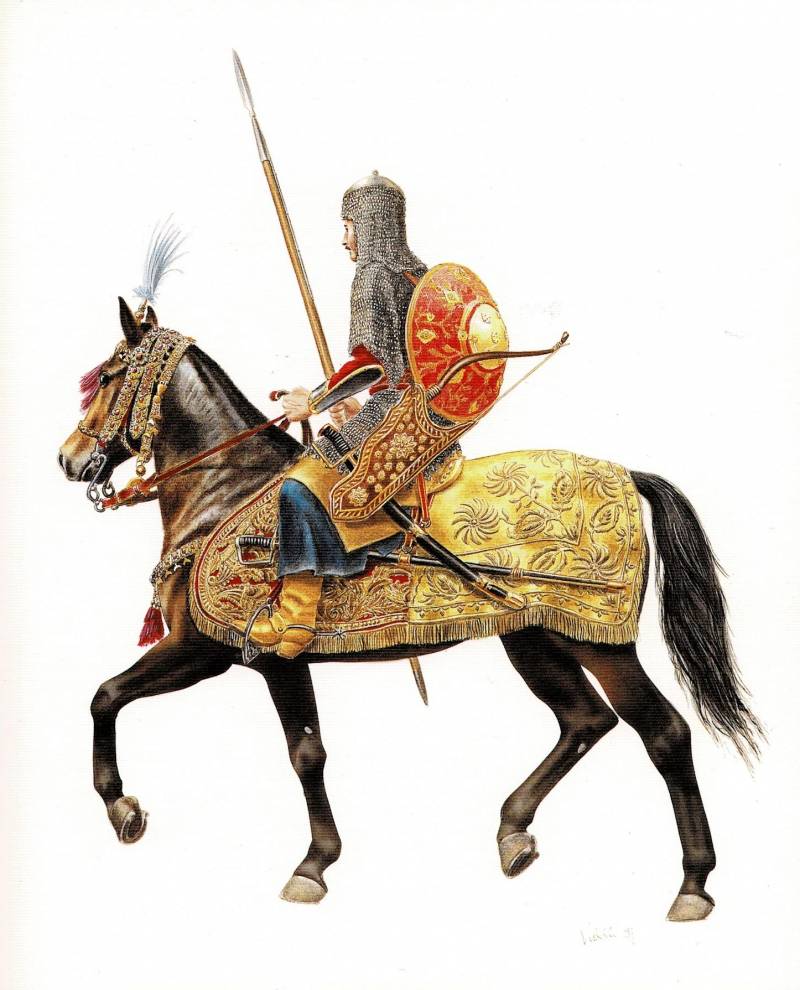
Polish carapace. Illustration from the book “Cavalry. The history of fighting elite 650BC - AD1914 »V.Vuksic, Z. Grbasic.
First Book of Maccabees 4: 31
Military affairs at the turn of the eras. In the previous article, we met with the armored riders of Gustav Adolf and the “winged hussars” of the Polish-Lithuanian Commonwealth, which played a very important role in the defeat of the Turks under the walls of Vienna. But one should not think that the equestrian forces of the united Polish-Lithuanian state were exhausted by these magnificent horsemen. Of course not, there were other riders there, and here we will get to know them today.
The armor starts and ... loses!
The end of the Thirty Years' War, which many historians called the “First World War”, also marked the end of a very long transitional period, when weapons almost equally competed with manufacturers of armor. Firearms now began to prevail over the armor in the land war, and the rivalry of armor and shell lost its relevance until the first tanks in 1917 year.
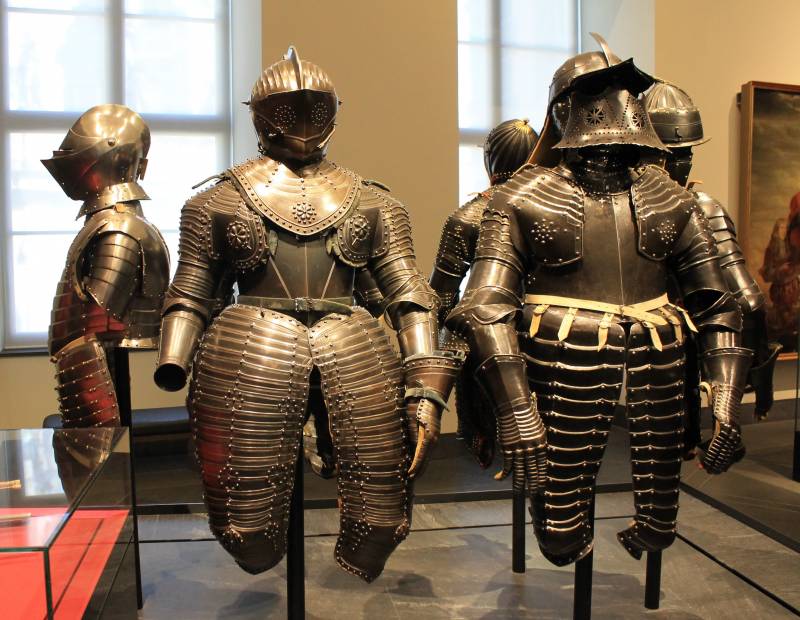
Only the development of industry could provide such a defensive armament with significant detachments of European plate cavalry. But the old variety of knightly armor could now be forgotten. Armor was made in batches of several hundred and even thousands of sets, usually of three sizes, and then the soldiers themselves changed, which is more suitable for whom. Armor of cuirassiers by Christian Muller, 1620 Dresden (Armory of Dresden). Lush leggings covered no less lush pants!
However, in the East, the development of protection for riders is a century behind Western Europe. In the second half of the XVII century. horsemen dressed in chain mail, whose equipment has not changed for a thousand years, were also found in the vastness of Russia, Poland, Ukraine, Hungary and Turkish territories. Well, in Tibet, riders in chain mail traveled back in 1935! There were several reasons why this type of protective equipment lasted so long in the East, but disappeared in the West.
Chainmail for the East
In 1600, Graz's workshops continued to produce short chain shirts, “underpants,” “pelerines,” collars and sleeves to protect parts of the body that, so to speak, protruded from invulnerable armor. However, a pair of sleeves cost 10 guilders, a full chain shirt 25, and a full set of armor only 65 guilders. The armor provided much better protection, and the forging technology was more advanced and cheaper than welding or riveting small iron rings. Therefore, due to the high price and insufficient protection that chain mail gave, in the West at the beginning of the XVII century it was almost completely abandoned.
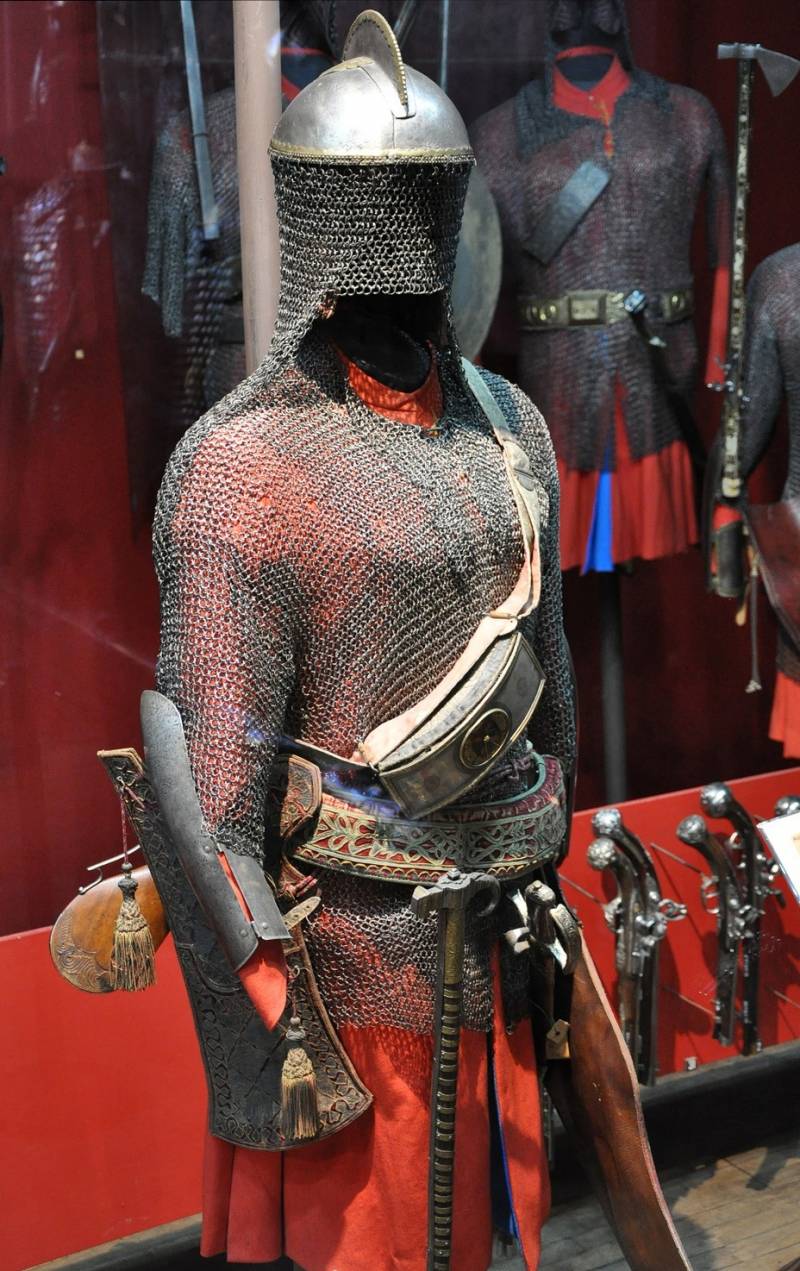
Armor worn by ranged horsemen of the hussar banners or shell, XVII century. (Museum of the Polish Army)
In the East, everything was different. Each village blacksmith was able to cut iron rings and turn them into chain mail. The cost of this labor was much lower, since neither special qualifications nor sophisticated tools or furnaces were required for the manufacture of drawing plates. Therefore, almost until the end of the XNUMXth century, chain shirts were produced in Afghanistan and Iran, and they were worn almost like a national costume.
In the Western armies, the ratio of infantry and cavalry was about three to one. In the East, the opposite was true: the horseman was still the backbone of the army, and his main weapons were a spear, a saber, a long sword for a stabbing strike and a compound bow. Against this weapon, chain mail and a round shield gave quite adequate protection.
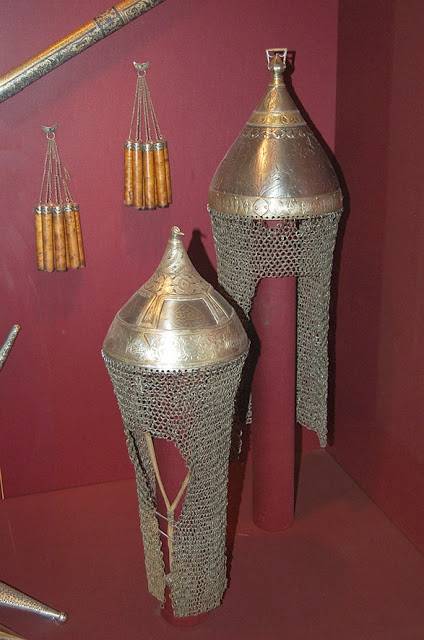
Caucasian helmets with chain mail The imperial convoy of sovereigns of the Russian Empire wore such helmets even in the XNUMXth - first half of the XNUMXth centuries. in. (Metropolitan Museum of Art, New York)
Second in importance
In Poland, along with armored men dressed in plate armor, riders dressed in chain mail, which were called shells, remained throughout the 1683th century. Judging by the inventories compiled before the battle of Vienna (8874), there were 84 shells under 100 flags; it was more than half of all cavalrymen of Poland at that time. They also belonged to the heavy cavalry, and were brought into detachments of 3 people. They were served by people who belonged mainly to the middle and lower nobility. They were armed with a 170 m long spear, a saber, a long straight sword-konchar up to XNUMX cm long, usually worn on the left side of the saddle, a ship-saber, composite bow and a round shield (kalkan). Some of the shells who fought at Vienna also had a pair of pistols in embroidered saddle holsters.
What happened after the battle of Mohach?
Now, let's go to another eastern kingdom of Hungary and see what happened at the turn of the epochs. And there in 1526 the Hungarian army was defeated by the Turks at the Battle of Mojac. The king and the cream of the nobility died in this battle, and Hungary fell into three parts: one was occupied by the Turks, who established their own administration there; another became dependent on Vienna, hoping to get protection from the Turks; the third proclaimed its king and adopted Protestantism so that the feudal lords there could seize the rich lands of the Catholic Church. These differences led to constant conflict over the next 300 years: part of the Hungarian nobility recognized the rule of the Habsburgs, part fought against them along with the Turks, and part with the Habsburgs against the Turks. Unions depended on circumstances and assessments of what was seen as the greatest evil at any given moment.
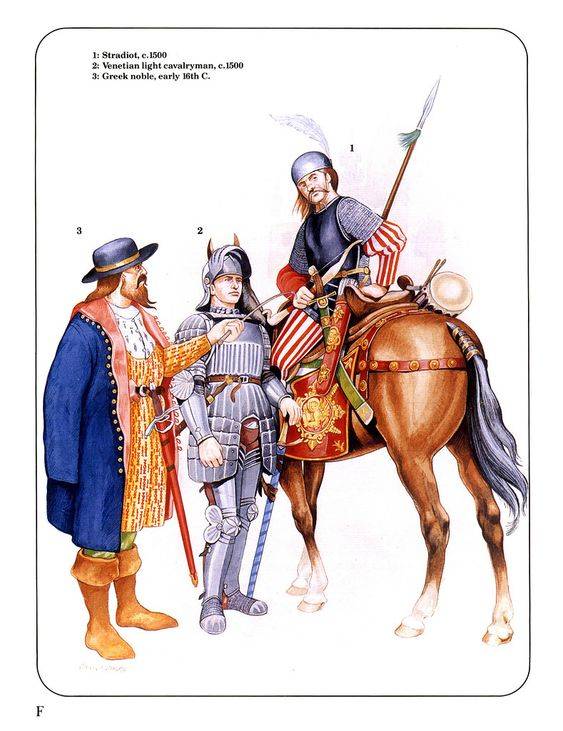
The hired cavalry was also widely used by the Venetians. Among the Balkan peoples, they gathered cavalry of stradiots (1), who was also dressed in chain mail and wore shields of the Bosnian scootum type. The Venetian plate cavalry (2) in 1500 wore full knightly armor and fought with spears and swords. Fig. Angus McBride
During the "Great Turkish March" to Vienna (1683), Austria was devastated by the Tatars and light Hungarian horsemen - hussars. They were led by Imre Thokli, a Hungarian prince who rebelled against the Habsburgs. With the help of the allied forces from Poland and the troops of the German principalities, the Austrians managed to defend Vienna and then launch an offensive against Turkey. Moreover, the experience of the war led to the fact that already in 1686 the Austrian army was reorganized. And then, in the framework of this reorganization and preparing for further advance to the east, the Austrian Emperor Leopold I in 1688 created the first regular Austrian hussar regiment. It consisted of Hungarian émigrés who found themselves in the territory he controlled and who took the oath of allegiance to the Austrian crown. This regiment in its equipment became the exact opposite of the Polish hussars, although its effectiveness was high. In France, the first hussar regiment was formed in 1692, and in Spain in 1695.
Paid from the Treasury
In the Austrian army before, there were temporary detachments of light horsemen, which could number up to 3000 people. They were led by Hungarian and Croatian nobles, who could change overnight, especially if the Vienna court tried to force them to fulfill their feudal obligations. Leopold also ordered Count Adam Chobor to select 1000 people and form a hussar regiment, which would be paid from the imperial treasury, and take the oath of allegiance to the crown. It was supposed to consist of men aged 24 to 35 years and had horses aged 5 to 7 years. According to the state, the regiment was supposed to consist of ten companies of 100 hussars each. Officers of other Austrian regular cavalry units had a low opinion of the hussars, and considered them "not much better than bandits on horseback." However, they were very effective in the war, which is why in 1696 a second regiment was formed under the command of Colonel Dick; the third, commanded by Colonel Forgach, was created in 1702.
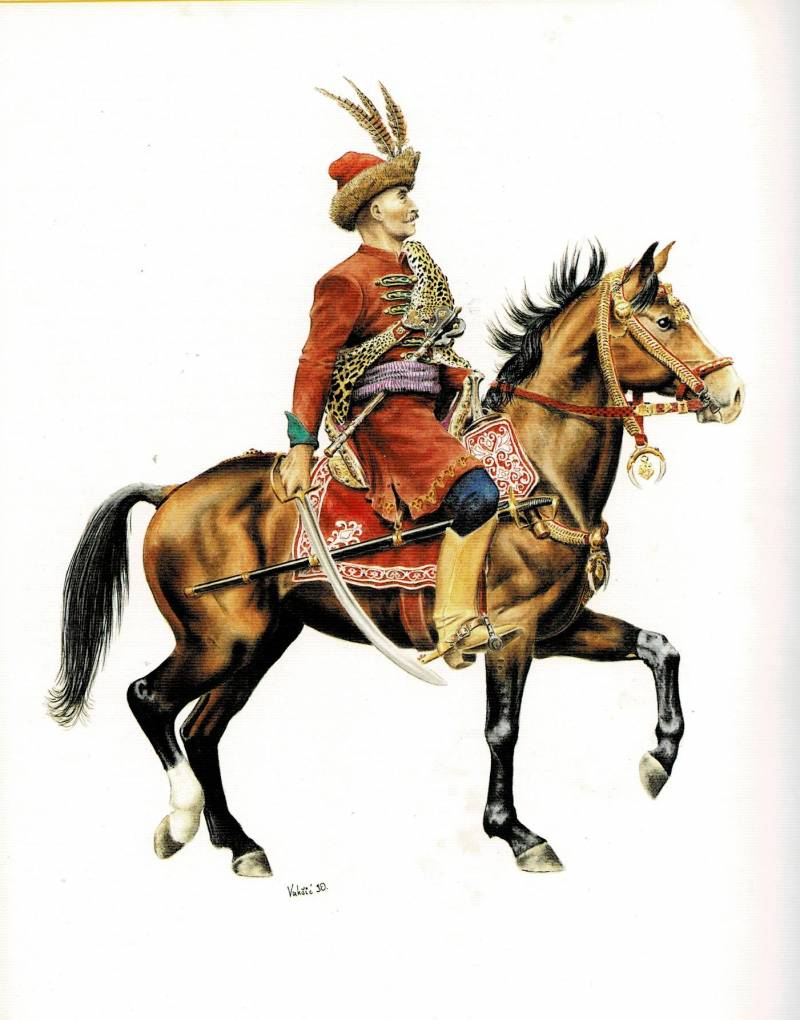
Austrian hussar of the end of the XVII century. Illustration from the book “Cavalry. The history of fighting elite 650BC - AD1914 »V.Vuksic, Z. Grbasic.
Five-horseman and scarlet riders
Local Muslims living in the border areas of the Ottoman Empire could also be recruited into mercenary units to act against Austria and Hungary. They were called at-kulu. This is the common name for irregular horse units in the Turkish provincial troops and in the troops of the Crimean khans. These units totaled from 20 to 50 people; their task was to defend the border, and they also played the role of reserve army in the event of war. Bechley - letters. quintuples; view of light horse troops under governors of the provinces. They received their salary of five acce * per day from the income of Eyyalet **. In the fortresses, beshly were created from among the local residents and were intended to repel surprise attacks of the enemy. Such detachments were also present at the Wallachian governor. A special position was occupied by the beshly detachments, created from the Janissaries, who also received five acres a day. They were intended for reconnaissance, when the army was on a campaign. He commanded every such detachment of the besley Turks yeah. The smallest unit (ode - "barracks") was commanded by Odabas. In 1701, on the Austrian border, the commander Bayram-aga had at his disposal 48 people: his deputy (workshop), ensign (bayrektar), quartermaster (gulaguz), scribe (kyatib), four officers (approval) and 40 horsemen (pharis). Their daily salary was: aha - 40 acce, workshop - 20, bayrektar - 15, gulaguz and kyatib - 13, odabasa - 12 and pharis - 11.
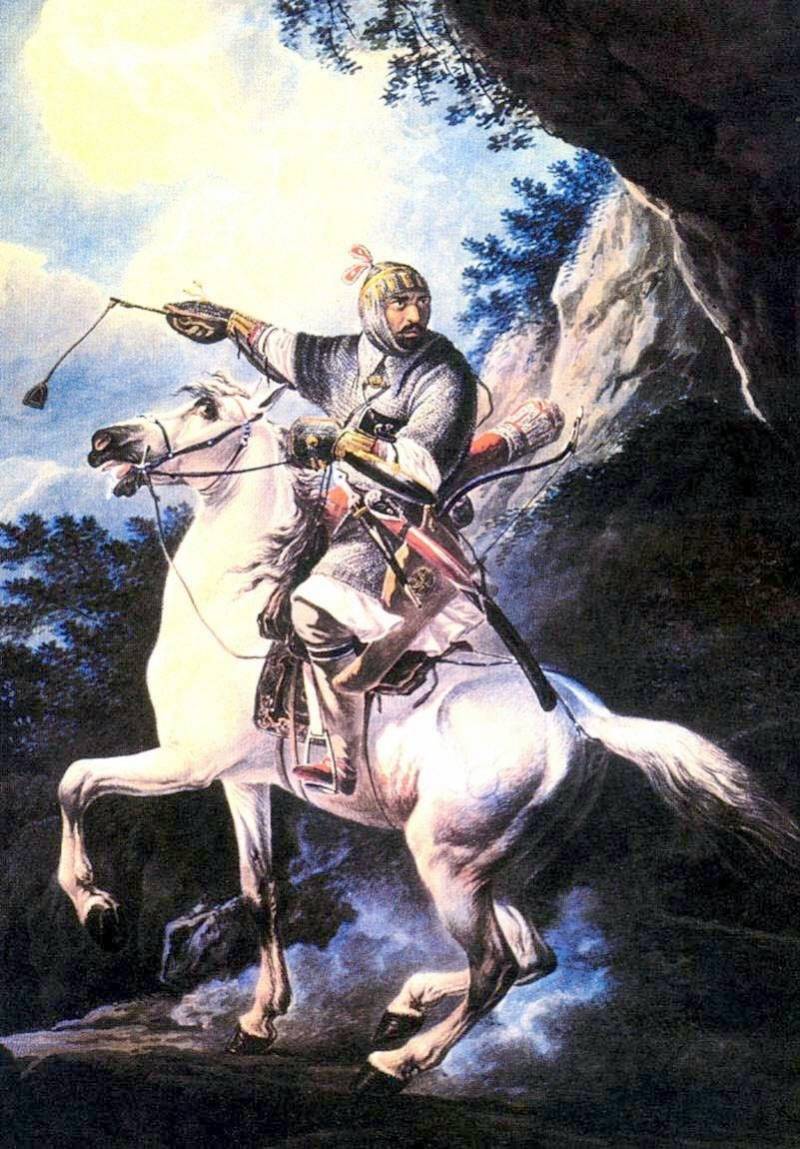
"Eastern warrior" (1805). Hood. A.O. Oryol (1777-1832). In fact, this painting shows the Circassian prince riding a horse of the Kabardian breed, in the characteristic armament of the Caucasian War era. He is wearing chain mail, a Turkish Misurk helmet, bracers, notched elbow pieces, weapons - a bow, arrows, a saber and dagger Kama
During the war, several detachments of 500-1000 people formed a larger formation (alai), which was commanded by an aleibei. Bey was an officer of the lowest rank in the Ottoman army, who was allowed to wear one ponytail (bunchuk ***); bey (beylerbey) could wear two, the vizier three, and the sultan had four bunchuk.
Among the Asian tribes, the number of tails on the pole meant a lot, but the general rule was one: the more horse tails, the more important the person giving the order, and, therefore, the order itself. Over time, Bunchuk became a military flag that the Turks brought from Central Asia and distributed in the territories they conquered. In the XNUMXth century, they were partially replaced in the regular army on the model of the European, but the semi-regular and irregular light cavalry units continued to use them until the end of the XNUMXth century.
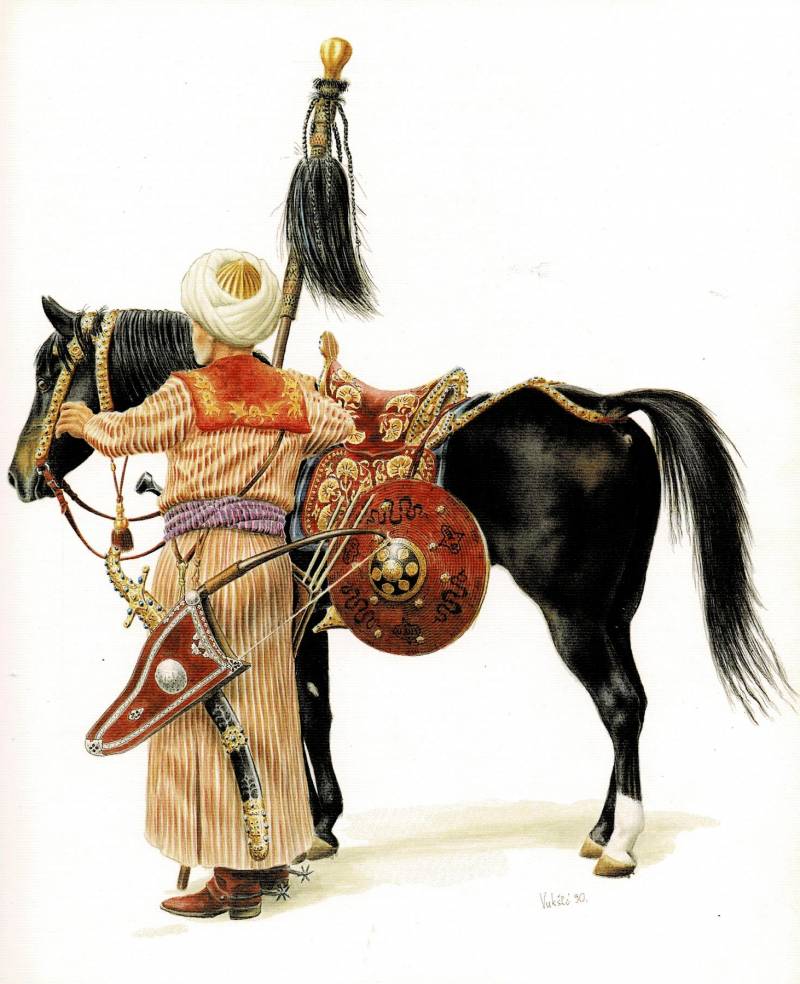
This figure depicts a pharis beirektar in ceremonial attire from the Turkish siege of Vienna (1683). Muslim artisans, who were responsible for the traditionally richly decorated weapons and equipment of warriors, could not use images of people and animals, but achieved perfection in geometric and floral motifs. Turkish riding equipment - saddles, sabers and shields - was especially appreciated in Hungary, Poland and Russia. Moreover, despite the wars and the papal ban, trade with Muslim gunsmiths never stopped in the West. Illustration from the book “Cavalry. The history of fighting elite 650BC - AD1914 »V.Vuksic, Z.Grbasic
* Akce - Turkish silver coin. It began to be minted in Bursa in 1328 by Orhan-bei (1326-1359). On the obverse were the name and title of the Sultan and the benevolent formula: “May his victory be glorified,” and on the reverse — the coinage, the year the sultan ascended the throne and the formula: “May his kingdom be preserved.” IN stories 6th century Turkey’s monetary circulation is a period of catastrophic drop in acre weight and deterioration of coin quality. Under the Sultan Orkhan, the Akche weighed 1,54 carats (1656 g) with the highest fineness of silver. By 50, its weight dropped to one carat, and the sample — up to 300%. By the end of the XVII century. the weight of the coin dropped ten times against the original, and the metal from which it was minted almost did not differ from copper: for one altun **** then they gave 400-XNUMX acre. Practiced coin damage has repeatedly led to indignation and unrest among merchants. artisans and other poor people.
** Administrative-territorial unit, a province in the Ottoman Empire from the end of the 1860th century to the 1722s, in the Safavid state from the beginning of the XNUMXth century to XNUMX.
*** Bunchuk - a shaft with a gilded ball and a ponytail at the end. Each Turkish pasha had his own bunchuk, according to which he was distinguished: one-bungled (peaceful - he is a zesanjak-bey, the leader of the liv), two-bungled (myrmir - he is a beylerbey) and three-bungled (vizier).
**** Gold Turkish coin. It was first minted under Sultan Mehmed II Fatih in Istanbul in 1453 after the city was captured by the Turks. The weight of the altun was about 3,5 g. And was almost equal to the weight of the European ducat. On the obverse was minted the year of accession to the throne of the reigning sultan, as well as his name and title, and an inscription-wish: "May his name be glorified." On the reverse was the inscription: “Minting brilliant, lord of glory and victory on land and at sea” or “Sultan of two continents and a hakan of two seas, Sultan, son of the Sultan”.
References
1. Richard Brzezinski & Richard Hook. The Army of Gustavus Adolphus (2): Cavalry. Osprey Publishing Ltd. (MEN-AT-ARMS 262), 1993.
2. Richard Brzezinski & Velimir Vuksic. Polish Winged Hussar 1576-1775. Osprey Publishing Ltd. (WARRIOR 94), 2006.
3. Richard Brzezinski & Graham Turner. Lützen 1632. Climax of the Thirty years war. Osprey Publishing Ltd. (CAMPAIGN 68), 2001.
4. Richard Bonney. The Thirty Years' War 1618–1648. Osprey Publishing Ltd., (ESSENTIAL HISTORIES 29), 2002.
5. Richard Brzezinski & Angus McBride. Polish Armies 1569-1696 (1). (MEN-AT-ARMS 184), 1987.
6. V. Vuksic & Z. Grbasic. Cavalry. The history of fighting elite 650BC - AD1914. Cassell, 1994.
To be continued ...
- Vyacheslav Shpakovsky
- Enemies of the Cuirassiers
With whom the latniks of the emperor Maximilian fought?
“A small discovery in the butt of an arquebus ...”
Horsemen of the Eighty Years War
Horses and saddles of the XVI-XVII centuries
“By people and by horses, not by aer”
Ordonance companies
“It's a miracle if someone is killed with a spear”
Information